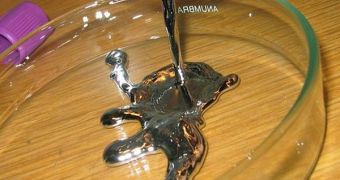Scientists with the US Geological Survey (USGS) have calculated that leaves falling off trees in the autumn transfer as much mercury from the atmosphere to the environment as precipitations do.
The work was focused on surveying the quantities of hazardous mercury that makes its way into the environment. According to researchers, it would appear that just as much of the chemical is removed from the atmosphere by rains as it is by falling leaves annually.
Analyzing the flow of mercury is very important because the chemical is a powerful contaminant that has the ability to damage food webs in most ecosystems. It also tends to accumulate in living organisms such as fish and humans, causing long-lasting side-effects.
There are significant amounts of the stuff in our atmosphere, and precipitations play the most important role in removing them. What the USGS research proves is that litterfall can be just as effective as taking mercury out of the air as rain.
Litterfall is a term referring to the totality of leaves and needles that fall to the forest floor during autumn. The new investigation was conducted on eastern US ecosystems, but researchers say that the findings most likely apply everywhere else as well.
“Before these studies, we didn’t know the extent of litterfall as a mercury pathway in different types of forests across the eastern US,” explains scientist Martin Risch, who is a research hydrologist at USGS.
“Our research found that annual amounts of mercury deposited in autumn litterfall from deciduous forests were equal to or exceeded the annual amounts deposited in precipitation,” he goes on to say.
The expert adds that coal-fired power plants, industrial boilers, cement manufacturing, and incinerators are the primary human sources of mercury. But forest canopies are natural janitors, collecting and trapping the dangerous chemical on leaves and needles.
During the fall, when trees shed their leaves, the large amounts of mercury that are trapped during the year are delivered to the forest floor, and contaminate the environment.
“Mercury emissions sources affecting mercury levels in precipitation in an area also may affect mercury levels in forests and litterfall in that same area,” Risch argues, saying that this work should inform the US Environmental Protection Agency (EPA) in regulating mercury emissions.
Details of the new investigation appear in the latest online issue of the esteemed scientific journal Environmental Pollution.
The two studies are called “Litterfall mercury dry deposition in the eastern USA” and “Spatial patterns and temporal trends in mercury concentrations, precipitation depths, and mercury wet deposition in the North American Great Lakes region, 2002-2008.”

 14 DAY TRIAL //
14 DAY TRIAL //